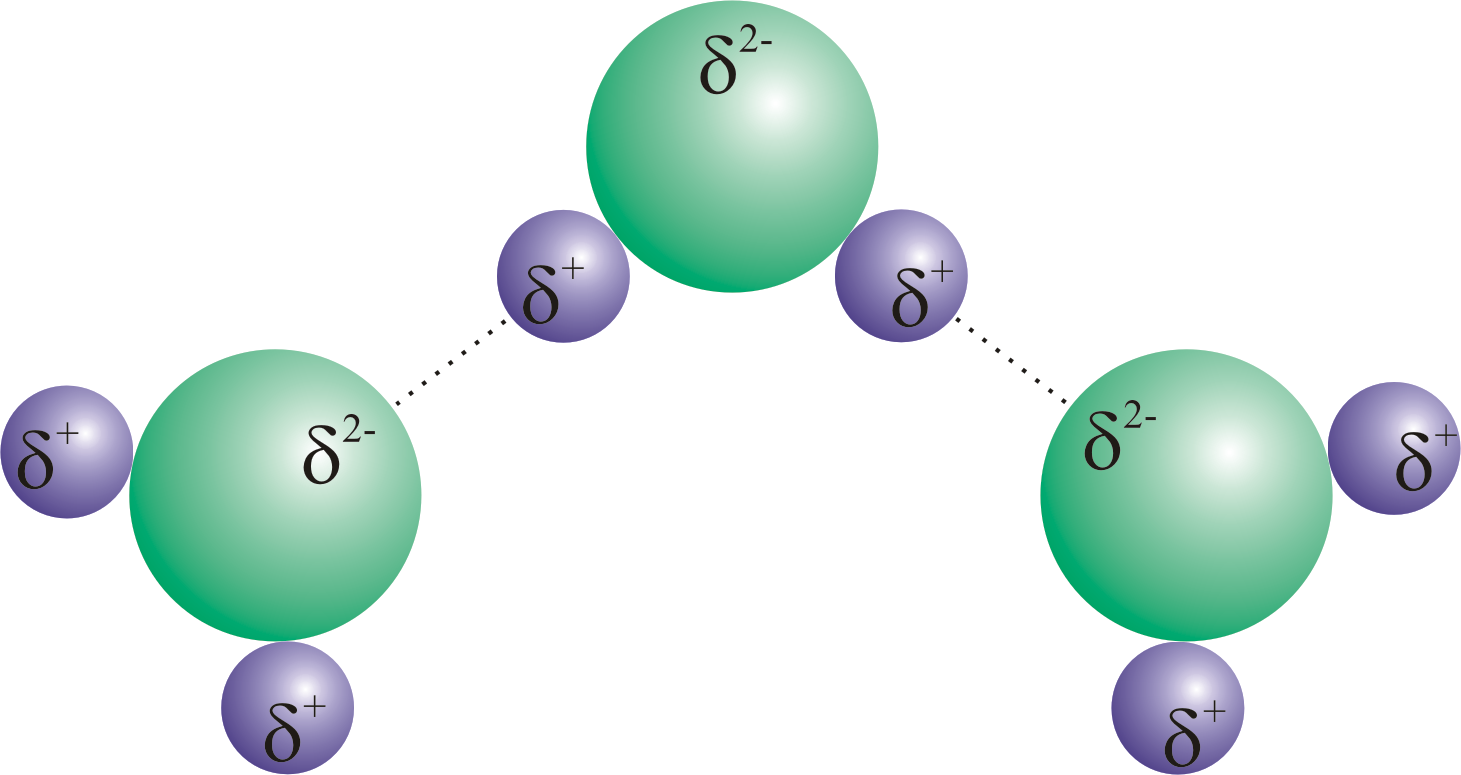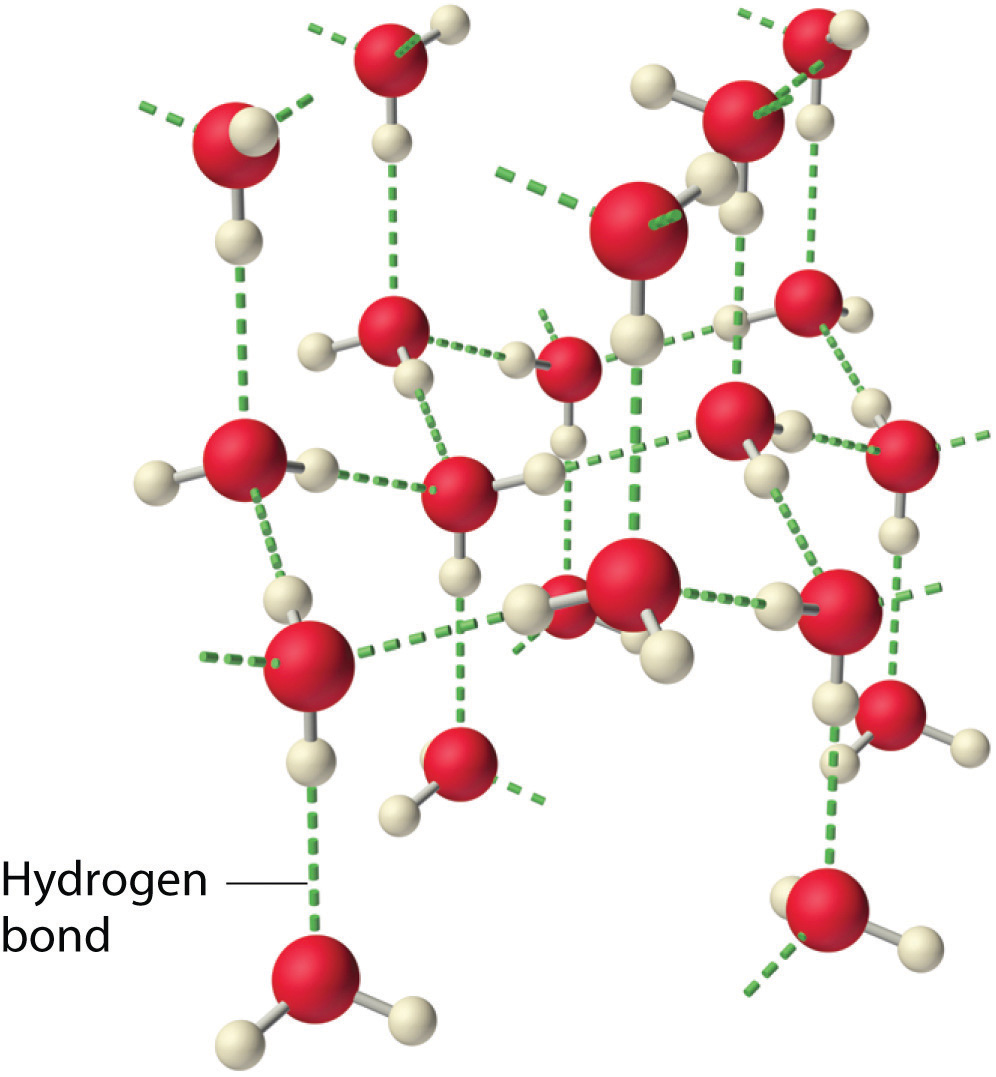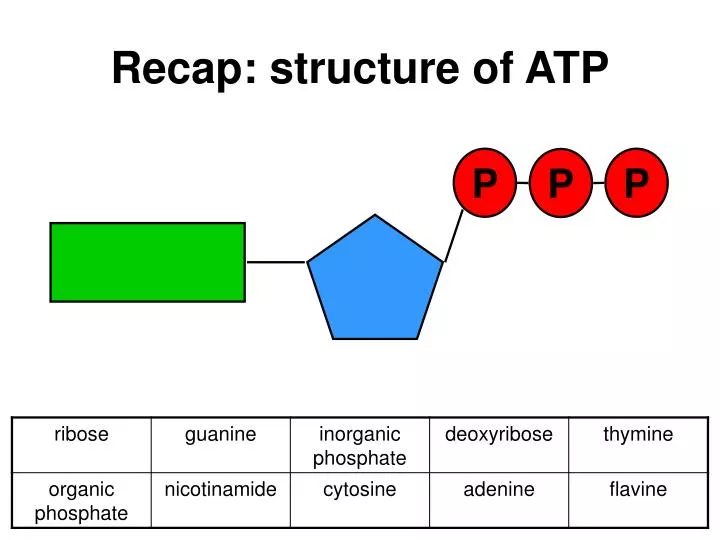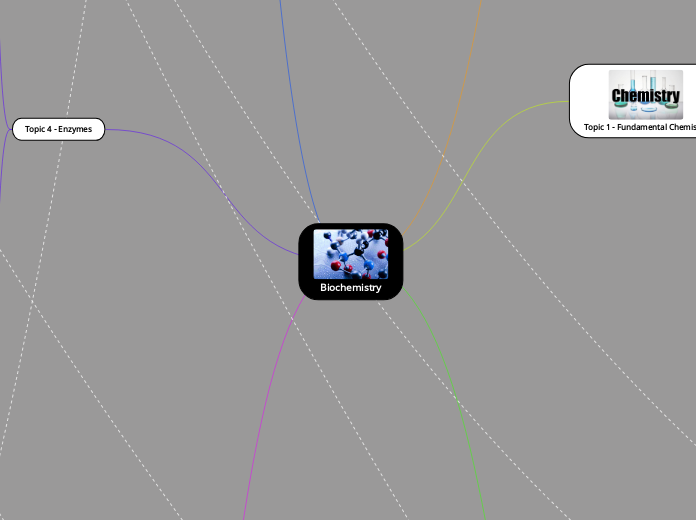
Biochemistry
Topic 2 - Functional Groups
Functional Group - Specific group of atoms that can be added to a hydrocarbon to modify its chemical behavior
Hydrocarbon - organic compound consisting entirely of hydrogen and carbon atoms
Chemical Behavior Changes
Polarity
Influences Solubility
Can become more prone to certain types of bonds
Types of Functional Groups
Carbonyl
oxygen double bonded to a carbon
Polar
Found in Lipids
2 Categories of Carbonyls
Aldehyde
Double Bonded oxygen is on the terminal carbon (End of the chain)
If one R-group is a hydrogen, the compound is an aldehyde
Ketone
Carbonyl category sits on carbon that isn’t a terminal carbon
If both R-group represent carbons, the compound is a ketone
Carboxyl
Carbon double-bonded to an oxygen AND single-bonded to an oxygen-hydrogen (OH) group
Polar
Can lose H (acidic)
Can become charged
Found in Proteins
Hydroxyl
OH group bound to a carbon
Polar
Found in alcohols and carbohydrates
Amino
Nitrogen and two hydrogen form a (primary) amino group
Polar
Can Gain H (alkaline)
can become charged (positive)
Found in Porteins
Phosphate
can be represented with the two hydrogens missing, in which case their respective oxygen atoms would be negatively charged
Polar
Can lose H (acidic)
Can become charged
Found in DNA, RNA
Sulfhydryl/Thiol
Sulfur-hydrogen group attached to a carbon chain
Polar
Rotten egg smell
Found in certain amino acids - Co-A
Methyl
Additional carbon (and its 3 hydrogens) added to a hydrocarbon
Non-Polar
Doesn’t change much about the initial molecule
Needs to be branching off the longest hydrocarbon chain

Topic 1 - Fundamental Chemistry
/PolarConvalentBond-58a715be3df78c345b77b57d.jpg)
1.1 - Atoms, Bonding, Polarity
Electronegativity Difference (of Elements)
Greater than 1.7 - Ionic Bonding
Example : HF - Hydrogen : 2.1, Fluorine : 4.0, Difference : 1.9
Less than 1.7 - Covalent Bonding
Example : HCL - Hydrogen : 2.1, Chlorine : 3.0, Difference : 0.9
Polarity
Between 0.5 and 1.7 - Polar Covalent Bond
Asymmetry Needed
Unequal Sharing of Electrons
Less than 0.5 - Non-Polar Covalent Bond
Symmetry Needed
Equal Sharing of Electrons
1.2 - Solubility and Intermolecular Bonding
Polarity (Rule of Solubility)
Polar Solutes Dissolve in Polar Solvents
Non-Polar Solutes Dissolve in Non-Polar Solvents
Solubility
Soluble - Able to Dissolve (especially in water)
Insoluble - Incapable to Dissolve
Hydrophilic Compounds (Water-Loving)
Polar Substance that Dissolves in Water (Soluble)
Hydrophobic Compounds (Water-Fearing)
Non-Polar Substance that will not Dissolve in Water
Intermolecular Bond - Forces of attraction between molecules
3 Types of Intermolecular Bonds
London Dispersion Force
Weakest of the 3
Temporary forces attraction due to unequal distribution of electrons in a molecule at any given moment
Dipole-Dipole Interactions
Stronger than London Dispersion Force
Refers to forces of attraction between polar molecules

Hydrogen Bond (Most Important)
Strongest of the 3
Interactions between 3 specific elements
Nitrogen
Oxygen
Fluorine

Hydrogen Bonds in Water
Cohesion
Ability of water molecules to form hydrogen bonds with other water molecules
Adhesion
Ability of water to form hydrogen bonds with other substances
Topic 6 - The Cell Membrane and Transport Across Membranes
6.1 - Phospholipid Bilayer
Function
Divides and protects the interior of the cell from the exterior
Regulates what can enter and exit the cell
Selective Permeability
Based on the size and solubility of the molecule and the availability of specific protein channels
Fluid Mosaic Model
Fluidity
The phospholipids and proteins move laterally. The components are not static
Mosaic-like
The membrane is composed of many types of macromolecules
Funtions of Membrane Proteins
Transport of large molecules such as glucose across the membrane
Enzymatic activity
Signal Triggering (eg. hormones)
Attachment and Recognition
Components
Phospholipids
Serve as the main component of the membrane, and create a barrier
Resulting membrane is impermeable to water-soluble molecules
Cholesterol
Regulates the fluidity of the membrane - serves as a kind of membrane lubricant
At high temperatures, it reduces fluidity
At low temperatures, it increases fluidity
Integral Membrane Proteins
Are permanent and usually transmembrane
Ex : Insulin receptors, ion channels
Peripheral Membrane Proteins
These proteins are capable of moving around the cell membrane
Ex : Cytochrome C
Glycoproteins
A carbohydrate bound to a membrane protein
The carbohydrate stick out of the cell
Provides structural support, is involved in cell recognition, and plays a role in cell to cell interactions
Ex : Mucins, antibodies
Glycolipids
A lipid molecule bound to a carbohydrate
These play a role in maintaining stability of the membrane and in cellular recognition
Ex : ABO Blood markers
6.2 - Transport Across Membranes
Types of Movements
Passive Transport (Does not Require Energy)
Osmosis
The movement of water, across a semipermeable membrane, down the concentration gradient
The semi-permeable membrane doesn’t allow the solute through, so the solvent - water - moves to balance out the concentrations instead
Facilitated Diffusion
Since they cannot get through the phospholipid bilayer, they must pass through a protein channel instead.
Different Types of Channels
Ion channels (Na+ channels, K+ channels)
Voltage-gated channels (open in response to electrical potential)
Ligand-gated channels (open in response to certain chemical interactions)
There is also facilitated diffusion with carrier proteins for larger molecules like amino acids, sugars, and small proteins
Simple Diffusion
Movement of solute down a concentration gradient (from high to low)
In the context of molecules moving across the cell membrane, this works for small, lipid soluble molecules, O2, and CO2
Active Transport (Requires Energy)
Protein Carriers
Coupled Transport
Solution Terminology
Solute
the substance being dissolved
Solvent
the substance doing the dissolving
Concentration Gradient
a gradual change in the concentration of solute from one area of the solvent to another
Types of Solutions
Hypotonic
Lower relative solute concentration
Hypertonic
Higher relative solute concentration
Isotonic
Same solute concentrations
Aquaporins
Proteins the allow for facilitated diffusion of water across the membrane
Ex : Water reabsorption in the kidney
Active Transport
Requires Energy
In form of ATP
Molecules are moving UP the concentration gradient
From low concentration to high concentration
Usually requires a specific carrier protein
Antiporters
Move two different solutes in opposite directions
Example : a sodium-potassium pump
Coupled Transporter
Two proteins working together
Bulk Transport
Used for molecules that simply can’t get through the membrane by any other means
Phagocytosis
“Cell Eating”
Particles are engulfed by a section of the membrane which pinches in to become a vesicle
Pinocytosis
“Cell Drinking”
Basically the same thing, except it’s used for the intake of fluid droplets
Receptor-Mediated Endocytosis
Very similar to phagocytosis, except it is prompted by molecules binding to specific receptors
Exocytosis
“Cell spitting”
Just the reverse of the three forms of endocytosis
When the cell needs to release molecules that can’t pass through the membrane
Topic 3 - Macromolecules
3.1 - Building and Breaking Macromolecules
2 Types of Biochemical Reactions
Anabolic Reactions
Builds larger molecules out of smaller molecules - Polymers out of Monomers
They do so through dehydration synthesis
Requires Energy
Catabolic Reactions
Break down larger molecules into smaller molecules - Polymers into Monomers
Done through a hydrolysis reaction
Releases Energy
Macromolecule - a molecule containing a very large number of atoms, such as a protein, nucleic acid, or synthetic polymer
Building Macromolecules
Monomer
A small molecule
Examples - glucose, amino acids, nucleotides
Polymer
Long-chain molecule made up of repeated patterns of monomers
Examples - starch, proteins, DNA
3.2 - Carbohydrates
Structure and Function
Monosaccharides
One Subunit
Energy Source
Ex: Glucose, Fructose
Disaccharides / Oligosaccharides
2-7 monosaccharides
Energy Source
Ex: Maltose, Lactose
Formation of Disaccharides
Bonds between monosaccharides are called glycosidic linkages. Usually identify which carbon on each monosaccharide is involved
Polysaccharides
Many monosaccharides
Energy source, Structural support, cell to cell communication
Ex: Starch, Glycogen, Cellulose, Chitin
Cellulose : Structural molecule in plants. Straight chains of 𝛽-glucose (Result in great structural molecule for plants). We can’t digest cellulose because we don't have the ability to break 𝛽-linkages.
Starch : Energy storage molecule in plants. Straight and branched chains of 𝛼-glucose (Zigzaggy structure resulting in weak structural support)
Glycogen : Energy storage in animals (and fungi and bacteria). Highly branched chains of 𝛼-glucose
Chitin : Structural molecule in organisms like insects and crustaceans (exoskeleton strength)
𝝰-linkages and 𝞫-linkages
𝝰-linkages occur when -OH groups involved in reaction are oriented the same way - both up or both down
𝞫-linkages occur when the -OH groups are oriented in opposite directions
Molecular Structure
Possess 1:2:1 ratio of C:H:O
Isomers
Molecules with same chemical formula but different structures
3.3 - Lipids
Structure and Function
Non-Polar
Chains or Rings
Composed of C, H , and O
4 Categories
Triglycerides
Energy Storage
Insulation
Composed of a glycerol molecule and 3 fatty acid chains
Phospholipids
Cell Membrane
Selective Permeability
Steroids
Hormonal Signaling
Cell response to the environment
Growth
Characterized by 4 carbon rings and varying functional groups
Waxes
Water Resistance
Protection
Combination of a fatty acid bound to an alcohol
Saturated vs Unsaturated Fatty Acids
Saturated Fatty Acids
Found in animal fats
Usually solid at room temperature
Saturated by hydrogen bonds
Every carbon is bonded to the maximum number of hydrogen atoms
Unsaturated Fatty Acids
Found in plant-based fats
Liquid at room temperature
NOT saturated by hydrogen atoms, because there is at least one double-bond between carbons
Trans Fatty Acids
Modified Unsaturated Fatty Acids
Happens when one of the hydrogen atoms connected to the double-bonded carbons is not on the same sides as each other
Resulting in no repulsion between hydrogen atoms on top of the unsaturated fatty acid creating the bend
Acts like a solid saturated fat
Phospholipid
Composition
Two fatty acids
The fatty acid “tail” is nonpolar and hydrophobic.
Resulting molecule is amphipathic - it is both partly hydrophilic and hydrophobic
One phosphate group
Makes the “head” polar and therefore hydrophilic.
3.4 - Proteins
Functions
Structural Support - Connective Tissues
Transport of Substances - Ion Channels
Cell Signaling - Insulin, Antibodies
Movement Between Cells - Protein Channels
Coordination and Regulation of Activities - Shape Changes
Acceleration of Chemical Reactions - Enzymes
Amino Acids Structure
Protein is a polymer - its monomers are amino acids
20 amino acids - 8 are “essential” (our body cannot synthesize them) - we need to include them in our diet
Categories
R- ground can make an amino acid
Polar and Non-Polar
Subtacidic/negatively charged, alkaline/positively charged, or neutralopic
Linkage between NH bond and double bonded oxygen divides the amino acid groups
Polymer of Amino Acids - Polypeptide Chain
Created in a watery environment
Protein Structure
Primary Structure - specific sequence of amino acids
Secondary Structure - hydrogen bonding of the peptide backbone (α-helix or β-pleated sheet)
Tertiary Structure - Folding of the polypeptide due to interactions between side chains - some proteins will stop here for their specific functionality
Some R-groups give the amino acids the properties of being nonpolar therefore hydrophobic or to others polar properties therefore hydrophilic
Nonpolar amino acids will cluster together inwards whereas the polar ones will move outwards - to be close to the water (protects nonpolar from water)
R-groups will become positively charged or negatively charged - attraction or repulsion between each other
Will fold up in an extremely precise way every time
Quaternary Structure - Multiple folded polypeptides joining together (not all proteins reach this stage)
Will fold up in precisely the same way every time - specific interactions between side chains
Protein Denaturation
Alternation of structure of a protein since function of a protein is dependent on its structure, denaturation ALSO disrupts its function.
Can be caused by heat, pH, salt, and mechanical agitation
Permanent - cooking an egg
Temporary - Heating up milk
3.8 - Nucleic Acids
Functions

DNA (deoxyribonucleic acid) - stores and transmits genetic material

RNA (ribonucleic acid) - translates DNA into protein

ATP (adenosine triphosphate) - stores potential energy in phosphate bonds, releases than energy when converted to ADP
General Structure of Nucleotide (Nucleotide - Monomer which make up a Nucleic Acid)
3 Main Components
Nitrogenous Base
Adenine (A)
Guanine (G)
Cytosine (C)
Thymine (T)
Uracil (U)
Pentose Sugar (5 carbons)
Deoxyribose in DNA
Ribose in RNA
Phosphate Group
Formation of a Polymer
When two nucleotides join, the nitrogenous base is not involved. The phosphate group from one nucleotide binds to a hydroxyl group on the sugar of the second nucleotide
The bond created is called a phosphodiester bond
Shape of DNA
Bases are joined together with hydrogen bonds
Topic 4 - Enzymes
4.1 - Enzymes
Is a Biological Catalyst
Role :is to speed up biological reactions by lowering activation energy (EA)
Activation energy : energy needed to be added before a reaction can proceed
Energy profile
Exergonic Reaction
Free energy - a measure of the energy available to do something
Results in an overall release of energy
More energy in the reactants than the products
Typically Catabolic
Endergonic Reaction
Results in an “absorption” of energy
More energy in the products than in the reactants
Typically Anabolic
Strategies to Decrease Activation Energy
M - Microenvironment
Enzyme creates a more suitable mini-environment for the reaction to occur
O - Orientation
Enzyme orients the substrate in such a way that it makes it more likely bonding sites come into contact with one another
D - Direct Participation
Enzyme, well, participates directly in the reaction in some way
S - Straining Bonds
Enzyme pulls on intramolecular bonds causing strain, and making it more likely for them to break with lower input of energy
Why rely on enzymes?
Heat - for instance, will generally speed up reactions by getting particles to move around faster, increasing the chance that reactants will bump into each other
Enzymes are not consumed during the reaction, and are therefore reusable
Enzymes exhibit substrate specificity - so they only encourage reactions the cell wants
4.2 - Enzyme Function
Enzyme Catalyzed Reaction
1 : Substrates binds to the active site
2 : Enzyme changes shape accordingly
3 : Substrates are held in the active site through weak intermolecular forces like H-bonds
4 : Enzyme lowers EA
5 : Substrates are converted into new product, new bonds are formed
6 : Product is released
7 : The active site becomes available for another set of substrates
Factors Affecting Enzyme Activity
Substrate concentration
The more substrate the there is, the higher the rate of reaction - up to a point
Temperature
Higher temperature can increase rate of reaction up until the point that it denatures the enzyme
pH
Certain enzymes are designed to function within a very narrow range of pH conditions
Enzyme Co-Factor
Substances other than the enzyme and substrate. Their job is to help activate the enzyme itself
Metal ions, such as Ca2+, Zn2+ and Cu2+
Coenzymes, which are organic molecules. Their job is to transfer energy in the form of electrons
They include vitamins, and an important molecule we’ll see much more of later called NAD+
Allosteric Regulation
More complex method of controlling enzyme activity
If a cell wants the ability to turn on and off a particular enzyme. Allosteric regulation is one mechanism it can use.
An allosteric site on an enzyme is any site that is NOT the active site. It can be used as an on-off switch
Competitive Inhibition
The inhibitor molecule is similar in shape to the substrate, and can bind directly to the active site - substrate is now blocked from binding
Feedback Inhibition
Can take place when there is a series of enzyme catalyzed reactions, where a product from each reaction becomes part of the next reaction
Occurs when a product from one of the reaction inhibits a previous step
Can be competitive or non-competitive inhibition
Topic 5 - Cells and Organelles
Cell Theory
All living things are composed of cells or cell products
The cell is the smallest unit of life
Cells only come from pre-existing cells
Common Cell Structures
Genetic Material
Cell Membrane
Cytoplasm
Types of Cells
Prokaryote
Bacteria
Cyanobacteria
Eukaryote
Animal
Plant
Cell Structure and Functions
Nucleus
Nuclear Envelopment
Single bilayer surrounding the nucleus
Protect the genetic material inside the nucleus
Both in Animal & Plant Cells - not present in prokaryotic cells
Nucleolus
Cluster of protein - RNA in the center of the nucleus
Production of ribosomes
Both in Animal & Plant Cells - not present in prokaryotic cells
Genetic Material
DNA/RNA
Contains all instructions to govern cell function
Present in all cells in some form
Ribosomes
Freely floating in the cytoplasm or attached to the endoplasmic reticulum
Made of rRNA and protein
Constructs proteins
In all cells
Packaging and Transport Organelles
Endoplastic Reticulum
Network of tubes/membranes extending outwards from the nucleus to the membrane
Smooth - no ribosomes attached
Rough - embedded with ribosomes
Transport of molecules within the cell
In all eukaryotes
Golgi Body
Stacks of flattened membrane sacs
Processes and packages proteins to be sent out of the cell
Modifies proteins
In all eukaryotes
Single Membrane-Bound Organelles
Vesicle/Vacuole
Literally just membrane balls
Vesicles transport materials out of the cell and store materials inside the cell
Vacuoles tend to be larger, especially in plants, and are typically used for storage
All cells have vesicles
Plant cells tend to have one large vacuole, while animal cells will have a few smaller ones, if any
Lysosome
Membrane balls containing digestive enzymes
The digestive enzymes they possess are used to break down a variety of things, including the cell itself!
In both Animal and Plant Cells
Double Membrane-Bound Organelles
Mitochondrion
Double-membrane bound
Smooth outer membrane
Folded inner membrane (cristae)
Has its own DNA
Site of aerobic respiration
Releases energy from glucose
In all eukaryotes
Plant-Only Organelles
Cell Wall
Rigid outer layer, composed of cellulose
Structural support and protection
Found in Plant cells (also fungi and bacteria)
Chloroplast
Green oval
Contains pigments - especially chlorophyll
Inner and outer membrane
Contains stacks (called grana) of pancake-like structures (called thylakoids)
Site of photosynthesis - the production of glucose using the sun’s energy
Found in Plants and Algae
